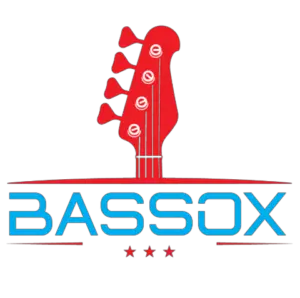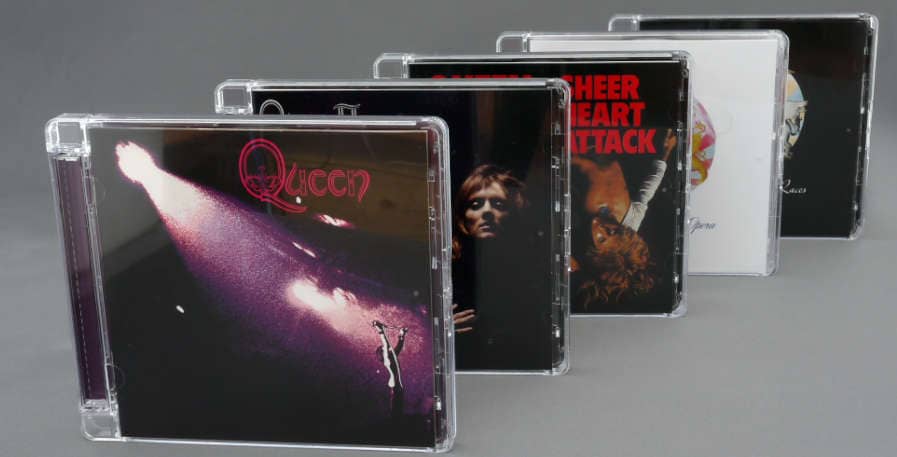John Deacon`s bass tone and playstyle are the backbone of Queen`s ambitious and unique sound.
By combining a smooth rock tone with a creative and varied writing style, Queen’s basslines always sounded cohesive and original. This has led many bassists to want to emulate him, and expand upon his style in their own ways.
Therefore, I decided to write this article to help out anyone who is looking to emulate John Deacon`s bass tone and playstyle.
I will show you how he managed to get hit sound through his instrument, gear, and string choices. Then, I will show you whether to play fingerstyle or use a pick and how to set your EQ.
Lastly, we will go over some of the techniques Deacon used to make his basslines stand out so that you can do the same.
What kind of bass did John Deacon play?
While John Deacon has played a multitude of different basses throughout his career, his most played instrument is the Fender Precision bass. He has notably also played a Musicman Stingray, Fender Jazz, and a Rickenbacker 4001.
The Fender P bass has a distinct tone that is known for sitting well in any type of mix. While the instrument has been used in every genre under the sun, its sound is a staple of the rock genre.
This made it the perfect fit for Queen`s sound. With the P bass, Deacon was able to fit complex bass parts into the band’s ambitious compositions. He also had a core tone that kept the band sounding like a rock band.
Thus, if you want a bass that will make you sound like Deacon, opt for a Fender Precision bass. He is depicted with this instrument on many of Queen`s albums, and it`s the backbone of his iconic sound.
As for other alternatives, a Fender Jazz bass can replicate the sound of the P bass to a certain degree. The Musicman Stingray also has enough tonal flexibility to achieve a similar tone. The Stingray was also Deacon`s own second choice when it came to basses.
What strings did John Deacon use?
John Deacon mainly played Rotosound Jazz and Swing bass strings. These were flatwound strings with string gauges of .105-.085-.065-.045. Deacon has also used Rotosound roundwound strings for parts of his career.
While Deacon was great at adapting his playstyle to the song, his core sound was always smooth. This is in large part because he mainly used Flatwound strings.
Flatwound strings are known for lasting forever. This is because as they get worn out they tend to develop a warmer, and smoother characteristic. Because of this, you might need to play your bass for a while, to fully get the sound you want out of these strings.
While Deacon has stated that he has used roundwound strings as well, his iconic tone is mainly associated with flats. Therefore, for anyone looking to recreate Deacon`s bass tone, my recommendation is to use the same Rotosound Jazz Flatwounds that he did.
John Deacon`s amp settings and EQ
Most of John Deacon`s sound comes from using a precision bass with flatwound strings. Thus, he mostly kept his EQ neutral.
Therefore, I recommend not tampering with EQ at all, at least as a starting point:
| Bass | Low-Mids | High-Mids | Treble |
| 5 | 5 | 5 | 5 |
Depending on your bass, amp, and your idea of Deacon`s sound, you might need to adjust the EQ slightly. These adjustments should however in most cases be minor.
If you are playing “Another One Bites The Dust” and you notice your tone is too hollow or not as boomy as Deacons, dial the low-end up. If you play the high melodies on “Bicycle Race” and they don`t sound bright enough, try dialing up the treble and high-mids.
You can apply these same concepts if you are playing on a different instrument than the P bass. In this case, you might however need to do slightly more experimenting with the EQ.
The best bet then is to compare your sound to Deacons. Notice whether you are lacking or have too much boominess or brightness, and adjust the EQ up or down from 12:00 gradually.
What amps did John Deacon use?
Towards the later stages of his career, John Deacon used multiple Acoustic 370/371s and a HiWatt amplifier. In his earlier stages, he played through a 100-watt HH Electronics IC.
In addition to being a legendary bassist, John Deacon was also an electronics engineer. While he helped design the Deacy amp for his guitarist Brian May, he stuck to bass amps made by other parties. What this tells us though, was that this was a guy who truly knew his amps.
Deacon went through a lot of different amps throughout his career. Despite this, his tone stayed relatively consistent.
Thus, while using any of the amps below will get you a step closer to John Deacon`s bass tone, amp selection was never a major factor for his tone. With that said, here is some of the notable gear he used:
| Year | Gear used: |
| Until 1973 | Orange OR120 head |
| ~1973-1976 | Hiwatt Custom 100 Amplifier Head |
| ~1976-1980: | Acoustic 370/371 |
| ~1981-1984 | Sunn 412L bass cabinets |
| ~1986-1990: | SWR Redhead |
Did John Deacon use a pick?
While John Deacon has played both with a pick and with his fingers. During the earlier decades of his career, Deacon mainly played using his fingers. In the later stages, he played both with his fingers and with a pick.
Deacon generally used a pick on songs where he found it fitting, such as on his iconic line on “Under Pressure”. He often also used both a pick and his fingers during the same song, such as on “Dragon Attack”.
During Queen`s 1985 Live Aid performance, Deacon mainly played with his fingers, but briefly pulled out a pick for “We Will Rock You”.
| Song | Playstyle |
| Bohemian Rhapsody | Fingers |
| Radio Gaga | Fingers |
| Hammer To Fall | Fingers |
| Crazy Little Thing Called Love | Fingers |
| We Will Rock You | Pick and Fingers |
| We Are The Champions | Fingers |
Occasionally he even played a little bit of slap. A rare example of this can be found in Queen`s song “Cool Cat”.
Thus, whether you should play with your fingers or a pick depends largely on what type of Deacon sound you are trying to emulate.
For groovy and smooth sound, such as on “Another One Bites The Dust” and “Somebody To Love”, use your fingers. A punchier sound, such as on “Under Pressure” and “Stone Cold Crazy” requires a pick.
Related reading: Playing bass with a pick VS fingerstyle
As for brand choice, Deacon used Martin Heavy picks, both for playing the bass and the guitar.
How do you play bass like John Deacon?
The defining characteristic of John Deacon’s bass playing was that he used the entire range of the bass. Deacon played melodic leads in songs that were piano-based and deep rock grooves in heavier songs. He also regularly incorporated slash chords and triplets.
Given that Deacon was a master at writing basslines that served the song, it can be hard to pin down his style. However, due to Queen releasing 15 studio albums, we have enough material to find some tendencies in his playing. Here are some tips on how to replicate his playstyle:
- Utilize your whole range – Some bassists stick to low grooves, while some play melodic leads whenever possible. Deacon, on the other hand, did it all. The bassline in “Bohemian Rhapsody” is a great example of how he keeps changing his range to fit the song. So, play deep grooves, play high melodies, and don`t be afraid to move between them regularly if you feel that a song calls for it.
- Switch out the root note with the 3rd, 5th, or 7th – While bassists most commonly play the root note of a chord, this doesn`t mean that it is the only option. The most harmonic alternatives are the 3rd and 5th of the chord. The 7th can also be used to create a further sense of tension and resolution. Chords, where the bass doesn`t play the root note, are known as slash chords, and Deacon used them all the time. A notable example of this is “Don`t Stop Me Now” where he plays them in the intro, verse, and chorus.
- Throw in quick fills – Deacon often added quick fills to add extra flavor and harmony to Queen`s songs. These fills were generally played higher up on the neck. To me, the most iconic example of this is the chromatically descending bass fill on “Killer Queen”. It is a short and straightforward fill, but because he only does it once and in conjunction with the vocals, it became a highlight of the song.
- Play Triplets – In recent years, triplets have become a staple in popular music. Decades before though, Deacon used them to add rhythmic variety and groove to his basslines. While he used the technique regularly, it is best showcased in “Somebody To Love” where he utilizes it in multiple different ways.
Conclusion
In conclusion, John Deacon`s bass tone mainly came from playing a P bass with Rotosound flatwound strings.
Whether you should use a pick or not depends on whether you are looking to emulate an aggressive (Under Pressure) or smooth (Another One Bites The Dust) tone. Personally, I found that I got closer to what I associate with a John Deacon tone with my fingers.
As for EQ, you will get the best result by keeping your EQ dials at 12:00, or close to it. If you are not playing a P bass, you might need to adjust them slightly more.
Use the entire range of your bass, and play both deep grooves and high melodies. Incorporate slash chords and triplets, and don`t shy away from throwing in some quick fills in occasionally.
If you do all of this, your tone will be as close to John Deacon’s bass tone as possible. The rest is in the hands, which can only come from practice.

